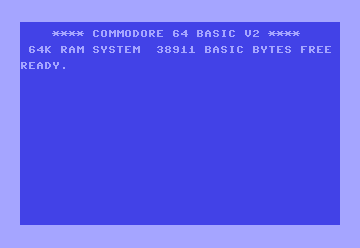
TIME: Your Commodore 64's Stopwatch
Want to add a timekeeping element to your Commodore 64 programs? Need to track how long events take or create time-based interactions? Look no further than the TI and TI$ system variables, your C64's built-in stopwatch! These handy tools keep track of the time elapsed since you last turned on or reset your computer.
TI and TI$: A Dynamic Duo
TI: A numeric variable that stores the elapsed time in "jiffies" (1/60th of a second). You can useTIfor precise timing calculations and comparisons.TI$: A string variable that represents the time in a human-readable format (HHMMSS), displaying hours, minutes, and seconds.
Syntax (Reading TIME)
You don't need a special command to access the current time. Just use the TI or TI$ variables in your code:
10 PRINT TI :rem Print the time in jiffies
20 PRINT TI$ :rem Print the time in HHMMSS format (e.g., "123456")
Syntax (Setting TIME)
TI$ = "<new time>"
Where:
- <new time>: A six-character string in the format HHMMSS (e.g., "123456" sets the time to 12 hours, 34 minutes, and 56 seconds).
Applications
The TI and TI$ variables are invaluable for:
- Timing events: Measure how long it takes for a user to react, for a loop to complete, or for a game level to finish.
- Creating time-based interactions: Trigger events or change behavior at specific times or intervals.
- Displaying the time: Show the current time on the screen as part of a clock or other application.
- Seeding random number generators: Use the changing value of
TIto seed theRNDfunction for more varied results.
Code Examples
1. Simple Timer:
10 TI$="000000" :rem Reset the time
20 PRINT TI$
30 FOR I = 1 TO 1800 : NEXT I :rem Wait for 30 seconds (1800 jiffies)
40 PRINT TI$ :rem Print the elapsed time
This prints the time (000000), then waits for 30 seconds before printing the time again (000030)
2. Stopwatch:
10 INPUT "Press Enter to start the stopwatch"; A$
20 T1=TI :rem Store the starting time
30 INPUT "Press Enter to stop"; A$
40 PRINT "Elapsed time (seconds): "; (TI-T1)/60
This code measures the elapsed time between two key presses in seconds.
TIME in the Wild: The Commodore 64 Alarm Clock
Imagine you want to turn your C64 into an alarm clock. You could use the TI$ variable to track the current time and trigger an alarm sound (using a SOUND user function) when the time matches a preset alarm time.
Don't let time slip away! With TI and TI$, you have the power to measure, manipulate, and display time in your Commodore 64 programs. It's like having a built-in timekeeper for your code, allowing you to create time-aware applications and add a new dimension of interactivity. So embrace the concept of time in your programming and let your C64 become your personal time machine!
